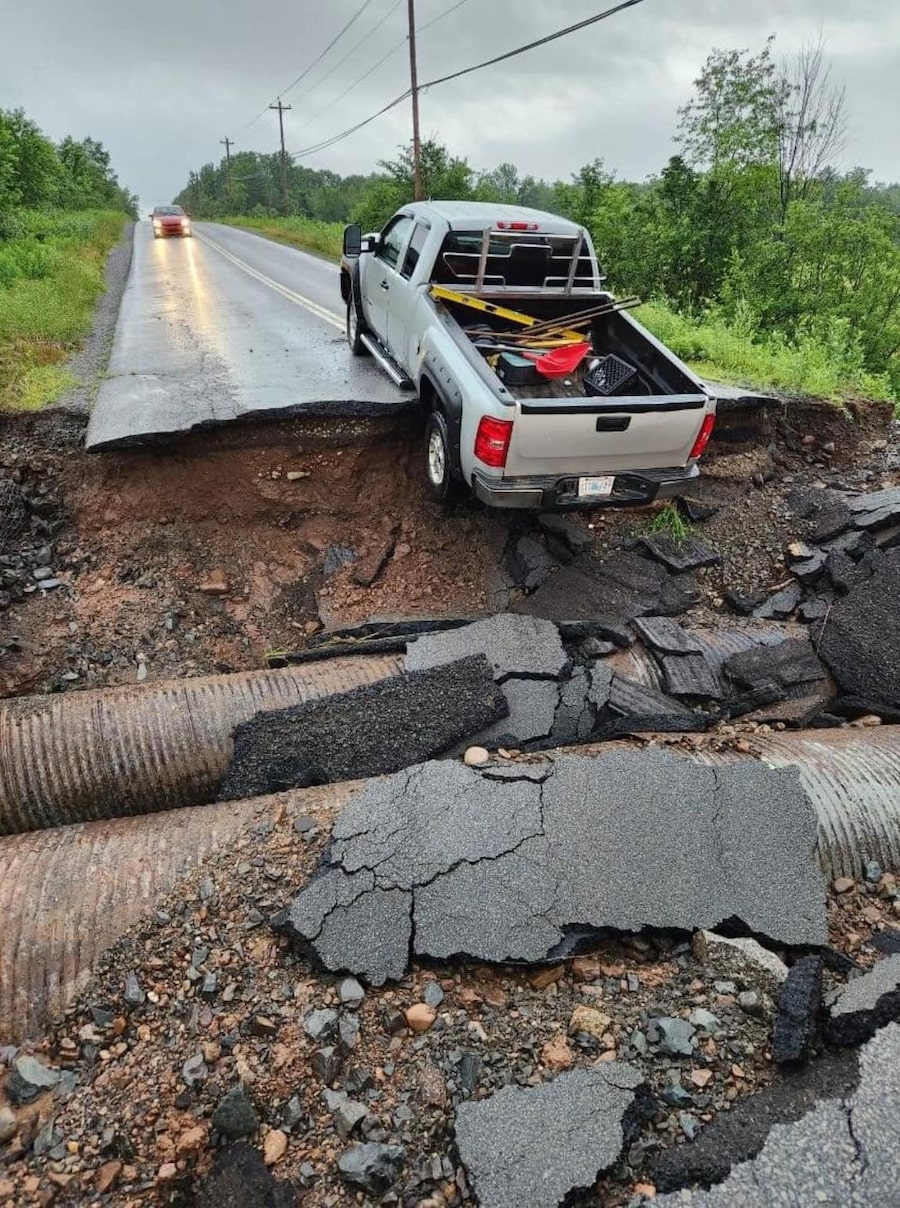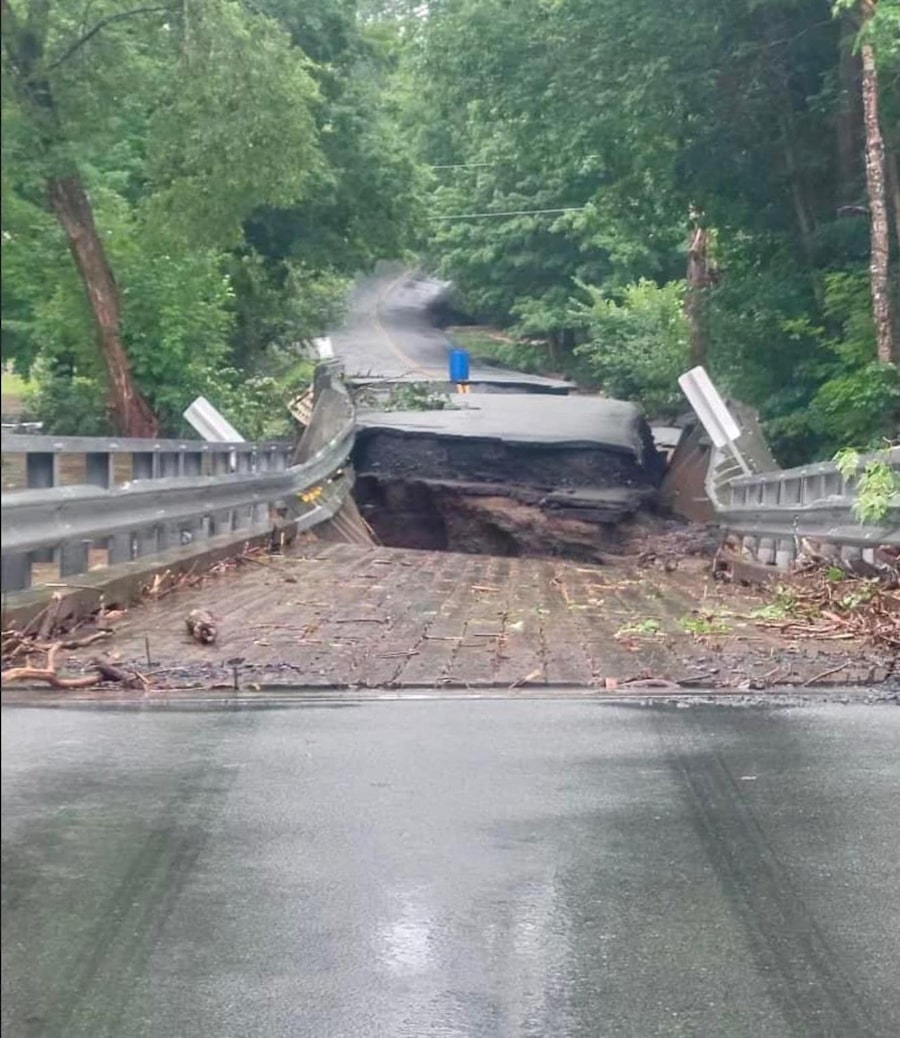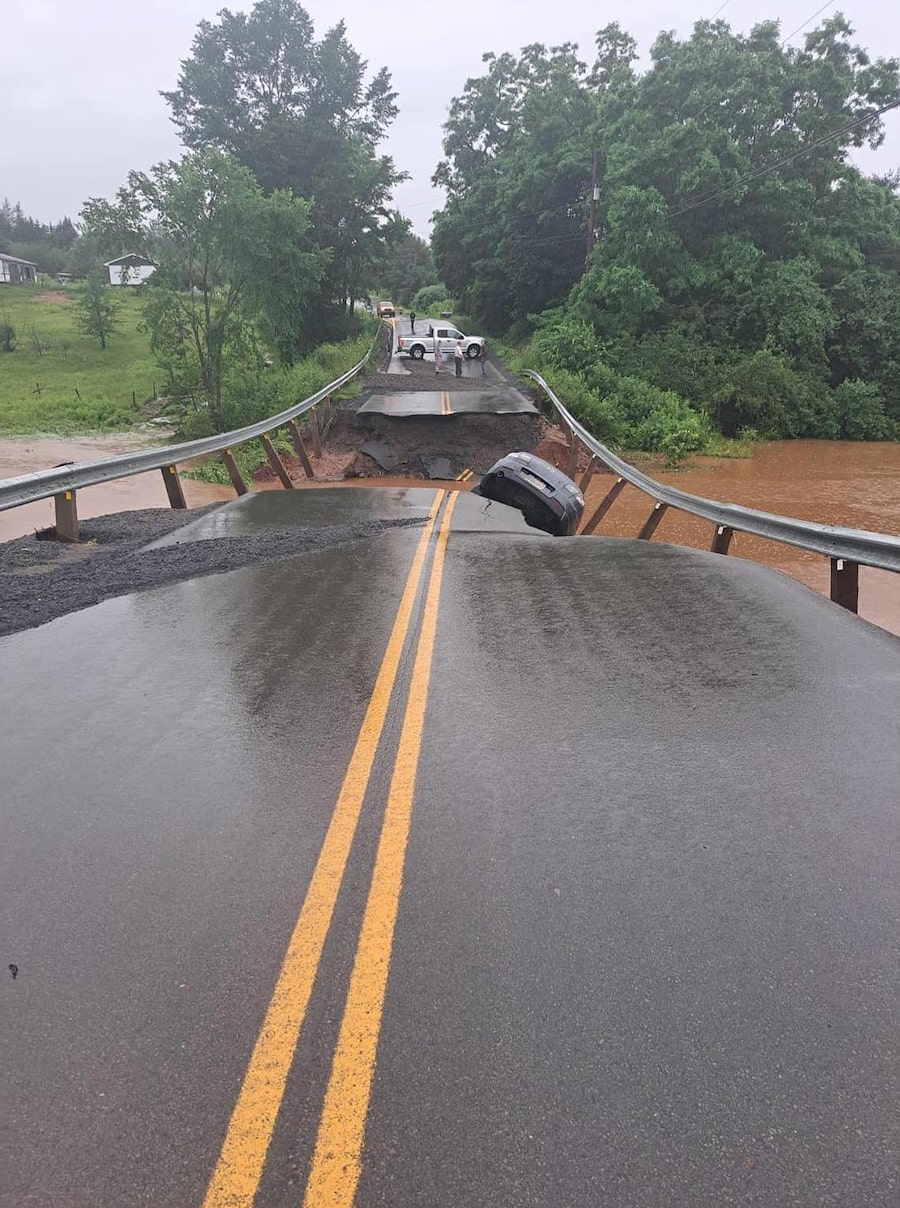Update: On Tuesday, the RCMP announced they had found the remains of the two missing children.
The body of a 52-year-old man and the unidentified remains of another person were recovered in Nova Scotia on Monday as police and search and rescue teams continued to comb murky flood waters for two others who are missing after flash floods on the weekend.
Four people, including two children and one youth, were reported missing on Saturday when the two vehicles they were travelling in were suddenly submerged in the rural community of Brooklyn, 65 kilometres northwest of Halifax.
The man’s body was recovered at 9 a.m. Monday in the flooded pastoral landscape near the two vehicles, which had also been missing but have now both been located. Later that morning, at 11:30 a.m., people came upon the human remains near the shoreline in Kings County, the border of which is roughly 25 kilometres away from the primary search area. The rivers in this part of the province are influenced by the Bay of Fundy, which has the highest tides in the world – twice a day filling and emptying, pulling and pushing in and out of the local rivers.
Police suspect the unidentified victim was pulled a great distance. “They were near a tidal system, near water, so we have reason to believe that they most likely moved along those waterways,” said Sergeant Rob Frizzell of the West Hants RCMP.
The Nova Scotia Medical Examiner Service is working to identify the human remains, said RCMP Chief Superintendent Sue Black at a news conference in Windsor on Monday. Her voice shook with emotion as she relayed the news of the bodies found.
“Our hearts are broken for the families and loved ones who went missing over the weekend,” she said. “I cannot begin to imagine how devastating the last days have been.”
The catastrophic rainfall started Friday evening and stretched into Saturday, dumping up to 250 millimetres of rain in some parts of the province, destroying bridges, washing out at least 50 roads, and causing widespread damages to homes and buildings.
Under a beating sun on Monday, 60 search and rescue volunteers waded and paddled through brown flood waters looking for the other missing people. Two RCMP dog service teams searched the area while police used industrial high flow pumps to divert water from the flooded area. Searchers also scanned the flood waters from helicopters.
“Due to the geography and the scale, we can’t say for sure when somebody would or wouldn’t be located other than to say we’re making extensive efforts to try and go as quickly as possible and to find all the involved people,” Sgt. Frizzell said.
At a news conference in Windsor, Premier Tim Houston offered his condolences to the families of the missing and deceased people, saying these floods will be remembered for “the incredibly tragic loss of life.”
He addressed the devastating effect climate change is having on the province, with post-tropical storm Fiona last September, historic wildfires that destroyed 151 homes in June, and now the floods.
“There’s no question damage to roads, damage to property – all that stuff – we always say we can rebuild and we got through that, but now the loss of life brings new perspective, new magnitude to these crises that we’ve been facing,” he said.
“For me personally, it’s a reminder of how fragile things are, how fragile life is.”
About 90 kilometres north of Halifax, Canadian National Railway was dealing with a major washout along part of its main line in the province. Via Rail issued a travel warning, with no bookings available until Friday between Halifax and Moncton. Mail delivery by Canada Post is also currently on hold in the province.
Meanwhile, shipping containers are stacking up at the Halifax Port Authority because of CN closing of part of its rail line. The port, which brings in 600,000 containers a year, moves 60 per cent of its goods by rail, spokesperson Lane Farguson said.
Mr. Farguson said he couldn’t estimate the extra volume they’ve stored over the past few days. Goods often arrive from Southeast Asia, Europe and other areas, ranging from clothing and office supplies to frozen foods, he added. Sixty per cent of those containers are transported by rail to Ontario, Quebec and the U.S. Midwest, while the other 40 per cent are delivered to more local areas by truck.
Whether consumers will see delays in the delivery of their products depends on the extent of damage to the railway, Mr. Farguson said. For now, he said the port authority is making do by stacking shipping containers extra high in its yard and moving out any empty ones. If it appears repairs could take longer than a few days, Mr. Farguson said the port authority will start looking at other longer-term solutions.
With a report from The Canadian Press


